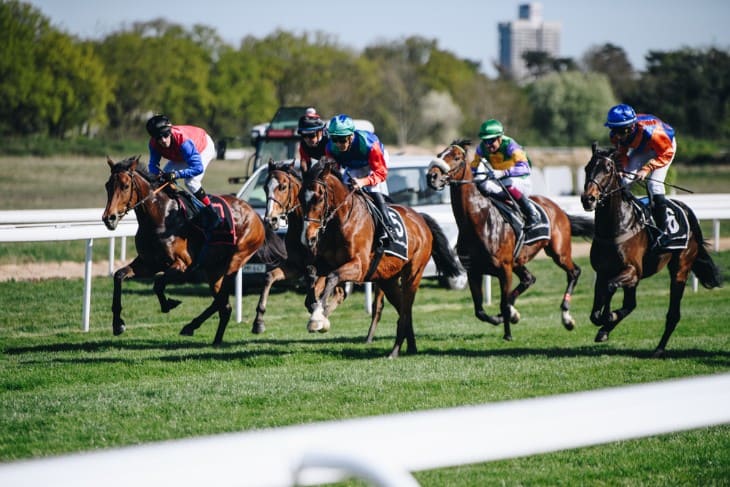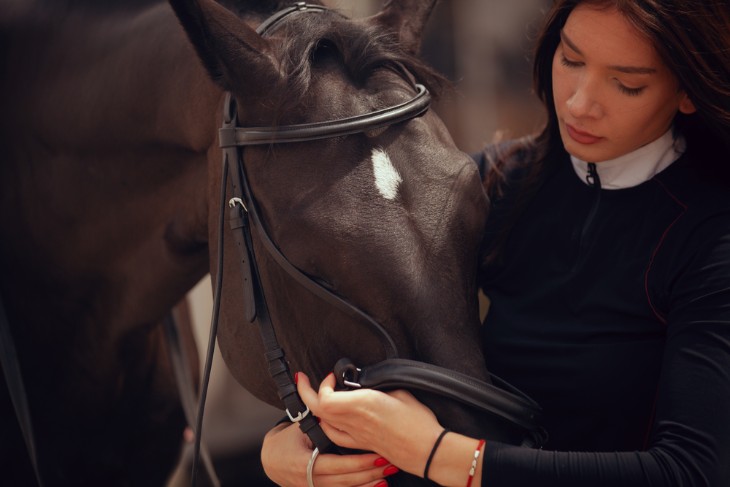Horse racing has been a popular sport for many years, consistently drawing large audiences. The thrill of watching horses compete is undeniable, as evident from the reactions at racetracks. However, a significant concern remains: Is horse racing inherently cruel?
To address this concern, it's crucial to review the history of horse racing, understand its development, and analyze current practices and regulations related to equine welfare. This article intends to thoroughly examine the ethical concerns associated with horse racing.
Intriguing Origins: A Historical Overview of Horse Racing
Horse racing's origins can be traced back to ancient civilizations, where it served as a test of both human and equine prowess. In Britain, the sport gained formal recognition with the establishment of the Jockey Club in the 18th century, marking the beginning of regulated racing and the creation of the classic thoroughbred races we know today.
Initially, horse racing was a demonstration of the harmony between human and animal, celebrating the symbiotic relationship between jockeys and their noble steeds. Horses were bred for strength, speed, and endurance, qualities that showcased the pinnacle of selective breeding.
Over the centuries, horse racing's allure spread across the social strata, becoming a sport enjoyed by royalty and commoners alike. Grand events such as the Epsom Derby and the Royal Ascot became iconic fixtures on the British social calendar, shaping cultural perceptions and cementing racing's place in the nation's identity.

The Thrill of the Track: Exploring the Popularity of Horse Racing
Today, horse racing remains a thrilling spectacle. The crowd's excitement when the race starts, the suspense as horses near the finish line, and nail-biting photo finishes are all parts of the racetrack's attraction.
Horse racing's appeal goes beyond just the races. It boosts local economies, offering employment opportunities for trainers, jockeys, and other staff. Betting has also become a major aspect, introducing an extra dimension of excitement for many.
Furthermore, horse racing links us to our traditions and history. Continuing classic races, remembering iconic horses, and honouring skilled riders all highlight the long-standing influence horse racing holds in our culture.
Horse Welfare Matters: An Examination of Equine Health and Well-being
Horse racing's popularity brings up an essential issue: the welfare of the horses. These powerful animals, bred for speed and endurance, face immense pressures on the racetrack. Their well-being should be the industry's top priority.
The modern horse racing scene has made strides in veterinary care and horse management. Expert trainers, vets, and staff are dedicated to ensuring the horses receive excellent care, which includes proper diet, training, medical treatment, and preventative measures. Regular health assessments, physio sessions, and cutting-edge facilities help keep the horses in top condition.
However, some believe that racing's intense nature can be harmful to the horses. The demanding training, frequent travel, and high-pressure situations can lead to both physical and mental strains. While the aim is to achieve top performances, it's essential to weigh this against the horse's overall well-being, prompting a debate on competitive demands versus genuine care.
The Training Regimen: Assessing the Physical and Mental Demands on Racehorses
The journey to racing success is built on hard work, commitment, and rigorous training. Racehorses, akin to elite athletes, undergo detailed routines to maximise their speed, power, and stamina.
Training starts early for these horses, with many beginning their racing careers as yearlings, hoping for future wins. Initial training lays the groundwork, focusing on the right movement, balance, and obedience. As horses grow, their training becomes more intense, including heart-rate exercises, intervals, and race-like situations.
The relationship between the horse and trainer is vital. Trainers deeply understand each horse's character, strengths, and areas for improvement. With this insight, they can personalise training plans for each horse.
However, concerns arise when training becomes too intense. Finding the right balance between pushing a horse and ensuring its welfare is challenging. Some argue that in the quest for excellence, this balance can tilt, leading to undue physical and mental stress, and at times, questionable training methods.

Whipping Controversy: Debunking Myths and Addressing Animal Welfare Concerns
The crack of a whip and the sight of jockeys urging their horses to go faster are common in horse racing. However, these practices have led to significant discussions about their need and the potential harm to the horses. The use of whips is a main concern in the sport's animal welfare debates.
Those in favour of whipping argue it helps horses perform their best during key parts of a race. They see it as a tool to regulate a horse's speed, focus its attention, and encourage a final sprint, possibly determining race results. Jockeys, with their intensive training, are expected to use the whip sparingly and responsibly, following strict rules to prevent misuse.
Conversely, opponents believe whipping can distress and potentially hurt the horses. They say the sound and sensation of a whip can cause anxiety, unease, and even injuries. They suggest that with today's advanced training techniques and equipment, the whip's role is outdated and might be more about maintaining tradition than actual need.
To manage these concerns, there are clear rules about how often a horse can be whipped and penalties for breaking them. Some call for stricter regulations, suggesting races where jockeys guide their horses only with their voices and body language.
Risk and Injury: Analyzing the Hazards Faced by Horses in Racing
Racing for the win ain't all glory for our racehorses. They're giving it their all, but with that speed and competition comes a fair bit of danger. Accidents and injuries pop up, and it makes you wonder if it's all worth it for a bit of entertainment.
Now, don't get me wrong, these horses are proper athletes. But all that racing can be tough on their bodies. They might get anything from a sprain to a fracture, and sometimes, things get so bad that there's no choice but to put the horse down.
Luckily, vet medicine's come a long way. They're getting better at spotting and fixing injuries, and there are all sorts of programmes and tricks to help horses recover after a race. There's been a good push to make racing safer too – better tracks, more checks before a race, and some proper aftercare.
But even with all that, accidents can still happen. Makes you think, doesn't it? Is the thrill of the race worth the risks these amazing animals face? It's a tough one.
Behind the Scenes: A Glimpse into the Lives of Jockeys and Trainers
Horse racing is shaped by the crucial roles of jockeys and trainers as much as by the horses themselves. These professionals play pivotal roles in determining the success of racehorses through their expertise and dedication.
Jockeys, although often smaller in size, bring significant strength and agility to their role. Their interaction with horses goes beyond racing – it involves understanding each horse's characteristics and behavior. The manner in which a jockey handles the reins, adjusts their body, and communicates with the horse is crucial for racing success.
Trainers are responsible for developing horses into racing contenders. This involves creating specific training plans, managing nutrition, overseeing health care, and deciding on race participation. Their understanding of horse health and behavior is rooted in both science and years of hands-on experience.
However, the racing industry is demanding. The pressure to perform often results in tough schedules and personal sacrifices for both jockeys and trainers. Jockeys, in particular, face significant injury risks, requiring them to balance their drive to succeed with their personal safety.
The relationships between jockeys, trainers, and horses are central to the sport's operation. It's essential to recognize the responsibilities these professionals have, not only for success in racing but also for the well-being of the horses they work with.
The Role of Regulations: Understanding Industry Standards and Government Oversight
Sorting out the worries about racehorse welfare means laying down some proper rules. It's not just one group making the calls; it's a mix of the government, racing bigwigs, and folks who are all about animal welfare. They're all getting their heads together to set the standards that look out for the horses.
We're talking about everything from the type of track they race on to drug checks. There are now vet checks before and after races to make sure no injured or drugged-up horses are running. And there's been a big push to tighten the rules around whip use, make sure stables aren't too cramped, and sort out travel for the horses.
But, as always, it ain't that simple. Not everyone thinks these rules are enough, and others reckon they're too strict. Trying to keep everyone happy – from those who own the horses to those watching the races and the folks fighting for the horses – well, it's a right balancing act.
Alternatives and Reform: Exploring Ethical Changes in Modern Horse Racing
With some increasing concerns regarding the well-being of racehorses, many are championing changes and improvements to reshape the world of horse racing. These suggestions look to maintain the sport's excitement while prioritising the horses' welfare.
A prominent suggestion gaining popularity is the idea of racing without whips. Supporters believe that by giving up on whips, not only would it alleviate worries over animal welfare, but it would also prompt jockeys to improve their riding skills, enhancing the bond between the horse and rider. Such a move could transform the essence of racing and elevate its artistry.
Additionally, there's a push for racehorses to enjoy longer careers. By letting horses race over an extended timeframe, ensuring they have sufficient rest periods, the industry might lessen the physical demands on these animals and promote a more enduring approach to their racing lives.
Embracing cutting-edge technology to boost horse welfare is also on the cards. Tools such as equine monitors, sophisticated data analysis, and biomechanical evaluations can provide deep insights into a horse's well-being, capabilities, and training requirements. Using a data-focused approach might pave the way for bespoke training and care, fostering healthier and more robust racehorses.
As the dialogue on potential changes and enhancements gathers pace, it pushes us to contemplate a horse racing future that balances both its inherent thrill and a progressive, caring attitude. These proposed adaptations challenge established norms and encourage us to explore the potential of a sport that has enthralled many for years.
Conclusion
So, can horse racing be deemed cruel? The response appears as complex as the sport itself. It challenges us to reconcile the dichotomy between exhilaration and empathy, between the roar of the crowd and the quiet dignity of the racehorse. As we continue to shape the future of horse racing, our aim should be to respect its history while charting a course that places the health and dignity of these amazing creatures at the core of the sport.








